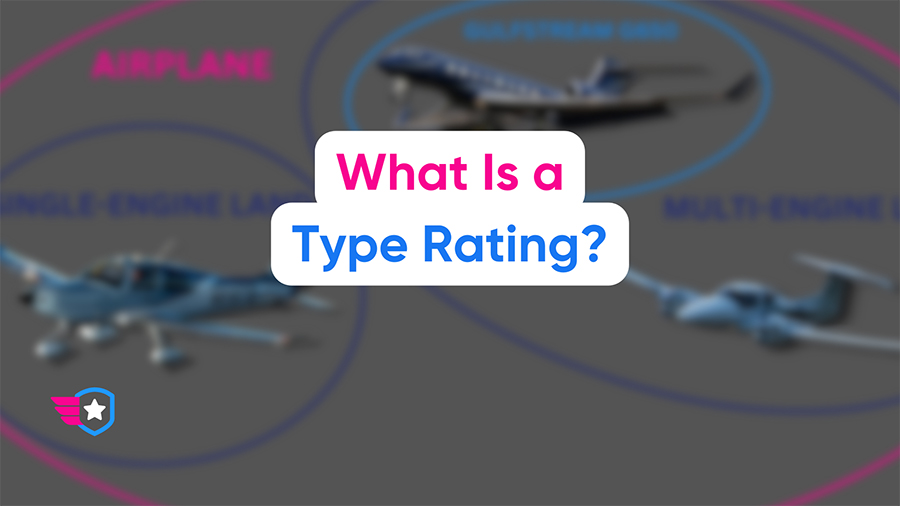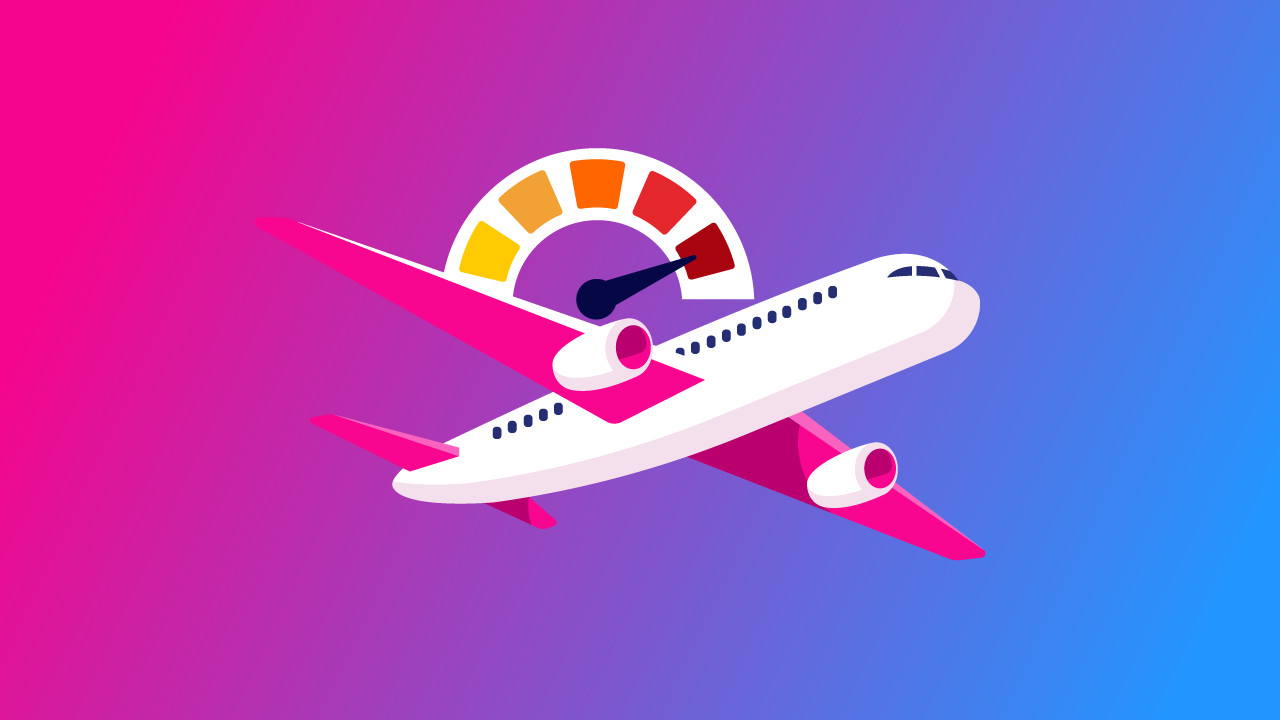You’ve probably heard the term “type rating” thrown around. But what is it, exactly? And why should you care?
There’s a common myth that type ratings are just for pilots of big, flashy jets. But that’s not the full story.
In this article, we’re going to demystify the concept of type ratings. We’ll explore what they mean, and why they’re important. Let’s get started!
Type Rating: What It Really Means
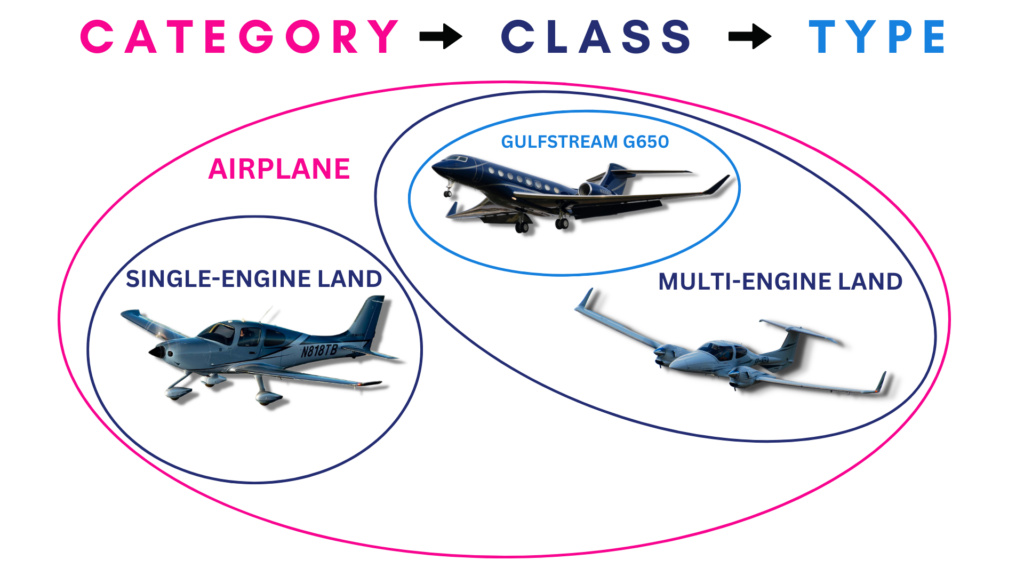
In the realm of aviation, a type rating is a specific kind of certification. According to the Federal Aviation Administration (FAA), it qualifies pilots to operate a particular make and model of an aircraft. Think of it as an additional certification on your license.
Here’s where it gets really important. A type rating is mandatory for aircraft with a Maximum Takeoff Weight (MTOW) of more than 12,500 pounds or any aircraft powered by “turbojets” (i.e., jet engines, but not turboprops).
This may be confusing, as you still need training to fly smaller aircraft. But for these larger, more complex aircraft, the FAA requires this additional certification.
Why?
Safety, of course. A type rating means you have mastered the unique characteristics, systems, and specific procedures for that aircraft. It’s a certification that you can handle the increased complexity and potential challenges that come with operating heavier, jet-powered aircraft.
So a type rating isn’t merely an extra feather in your pilot cap—it’s an essential qualification for flying these larger and more complex aircraft.
When Do You Need a Type Rating?
The need for a type rating arises when you step up to flying larger or more complex aircraft. As we mentioned earlier, if you’re flying an aircraft with a maximum takeoff weight (MTOW) of more than 12,500 pounds, or any aircraft powered by turbojets (excluding turboprops), you’ll need a type rating specific to that aircraft.
This rule applies to both commercial and private pilots. So whether you’re flying a 787 for a major airline or a private jet for a business trip, if the aircraft fits into these categories, a type rating is necessary.
Remember, each makes and model of aircraft has its own unique handling characteristics, system operations, and emergency procedures. These complexities increase with the size and power of the aircraft, hence the requirement for a type rating.
So, if your aviation ambitions involve captaining bigger planes or jet-powered aircraft, getting type-rated will be a necessary step on your journey. It’s not just a regulatory requirement—it’s also an important part of ensuring that you have the knowledge and skills needed to fly these aircraft safely and proficiently.
How to Get a Type Rating
Now that we know what a type rating is and when it’s required, let’s dive into the process of getting one. It’s a journey that involves both theoretical learning and practical training, all designed to equip you with the skills you need to command specific aircraft effectively.
Step One: Ground School
The theoretical part of your type of rating training begins in the classroom, also known as ground school. Here, you’ll study the specific systems, operations, and emergency procedures of the aircraft for which you’re seeking the rating. It’s all about understanding the aircraft inside and out – literally.
Expect a lot of flashcard-like learning and memorization of procedures, systems, and parameters.
Luckily the next step is far more fun.
Step Two: Simulator Training
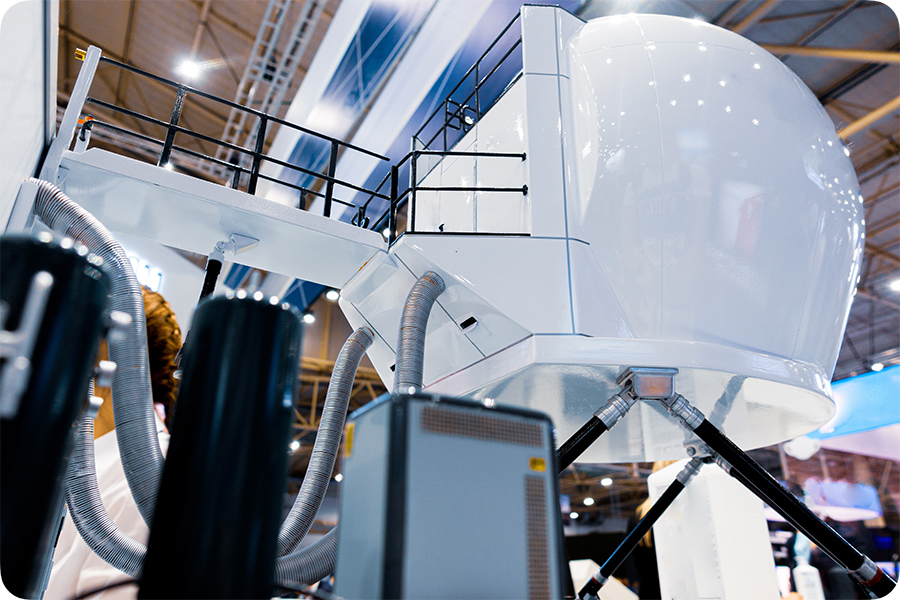
Once you’ve mastered the theoretical aspects, it’s time to put that knowledge into practice.
This stage of training usually takes place in a full-motion simulator that replicates the specific aircraft you’re training on. You’ll practice normal operations as well as how to handle potential emergencies, all under the guidance of a certified instructor.
The final step in obtaining your type rating is the practical test, commonly known as the check ride. A Designated Pilot Examiner (DPE) will evaluate your ability to operate the aircraft safely and proficiently, both on the ground and in flight. This is where you demonstrate all the knowledge and skills you’ve gained throughout your training.
The check ride typically takes place in a full-motion simulator. The full-motion simulator is so realistic that an actual flight in a real aircraft isn’t necessary. This not only saves a significant amount of money but also allows the examiner to subject you to a range of emergency procedures and scenarios.
Remember, type rating training is intensive and specific to each aircraft. It’s all about going beyond general flying skills and delving deep into the unique characteristics of a particular make and model. Achieving a type rating is a significant accomplishment, one that showcases your dedication, competence, and readiness to handle the responsibilities that come with flying larger or jet-powered aircraft.
How Long Does It Take To Get a Type Rating?
The time it takes to obtain a type rating can vary depending on a few factors. These include the complexity of the aircraft, your previous flying experience, and the training program’s structure.
Typically, getting a type rating can take anywhere from two to six weeks of full-time training.
Let’s break that down.
The ground school portion, where you immerse yourself in the technical knowledge of the aircraft, usually spans one to two weeks. This includes classroom instruction, self-study, and exams.
Then comes the simulator training, where you apply your newfound knowledge in a practical setting. This phase tends to last another one to two weeks, with multiple sessions in the simulator to practice normal operations, emergency procedures, and different flight conditions.
Lastly, you have the check ride with an FAA-approved Designated Pilot Examiner (DPE). This can be scheduled a few days after the completion of your simulator training, provided you’ve shown proficiency and readiness.
Remember, these timelines can vary. Some programs might condense the training into an intensive two-week course, while others might spread it out over a longer period. The key point is that obtaining a type rating involves a significant commitment of time and effort. But the reward—being qualified to fly larger, more complex aircraft—is well worth it.
Insurance Companies and Type Ratings
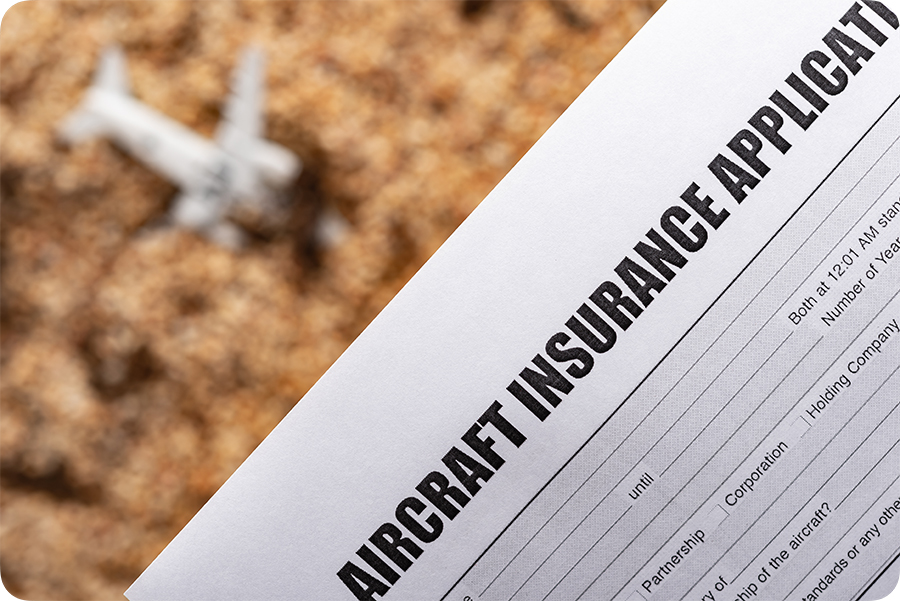
Type ratings aren’t just a requirement from the FAA—they’re also important to insurance companies. If you’re an owner-operator of an aircraft, your insurance company will want to know that you’re fully qualified to operate that specific make and model. That’s where your type rating comes in.
However, it doesn’t stop there. Depending on the aircraft and its usage, insurance companies may require additional certifications beyond your type rating. Two such qualifications that often come into play are the Instrument Flight Rules (IFR) rating and the Airline Transport Pilot (ATP) certificate.
The IFR rating demonstrates your ability to fly the aircraft by solely relying on the instruments in the cockpit. This is crucial for operating in low visibility conditions, like flying through clouds or at night. If you’re planning to use your aircraft in a variety of weather conditions, having an IFR rating can be a critical requirement for your insurance policy.
The ATP certificate, on the other hand, is the highest level of pilot certification. It attests to your extensive flight experience and advanced theoretical knowledge. If you’re operating larger, complex aircraft, or using your aircraft for commercial purposes, your insurance company may require you to hold an ATP certificate.
In summary, type ratings are a key part of satisfying insurance requirements as an owner-operator. But keep in mind that additional certifications like the IFR rating or ATP certificate may also be necessary to ensure you’re fully covered. It’s always best to consult with an aviation insurance professional to understand the specific requirements of your situation.
Summary
And there you have it—the ins and outs of type ratings. As we’ve explored, type ratings are more than just a bureaucratic checkbox. They’re a testament to your skill, dedication, and ability to operate specific aircraft safely and effectively. From the ground school to the simulator and the check ride, each step of getting a type rating is designed to make you a competent, safe pilot for that specific make and model of aircraft.
Remember, type ratings are not just for jet jockeys or cargo pilots. They’re for anyone who aspires to fly larger aircraft or turbojets. Whether you’re a private pilot flying for pleasure or a professional aviator flying for a living, a type rating may be a crucial step in your flying journey.
Also, don’t forget that type ratings have a role in insurance as well. As an owner-operator, your type rating, along with additional qualifications like the IFR rating or ATP certificate, could be key to satisfying insurance requirements.
So, next time you hear the term “type rating,” you’ll know it’s not just jargon. It’s a badge of honor, a mark of distinction, and a key to unlocking new opportunities in the world of aviation.
Happy flying!
